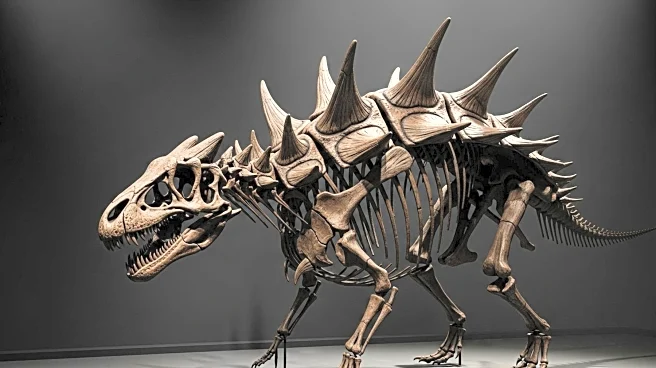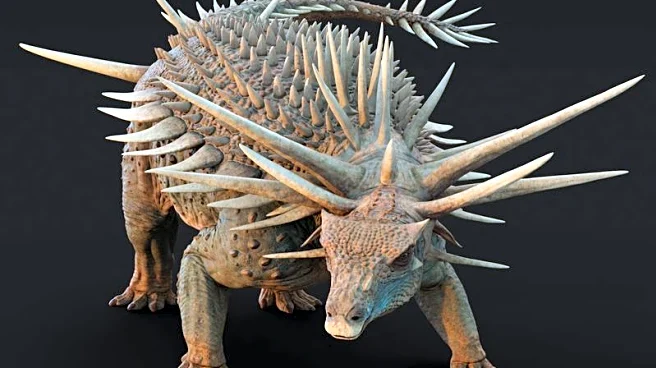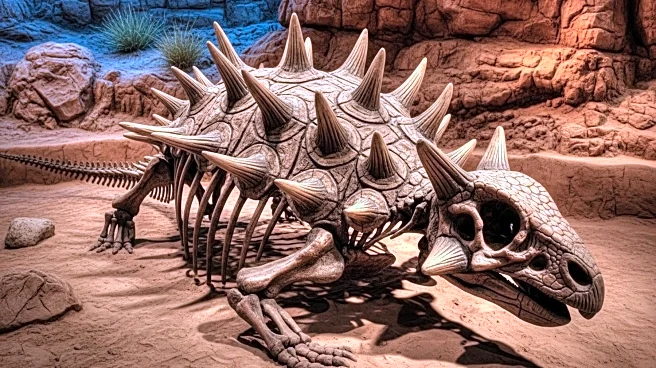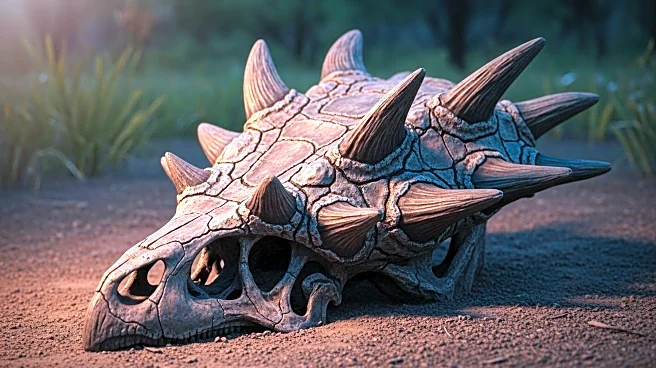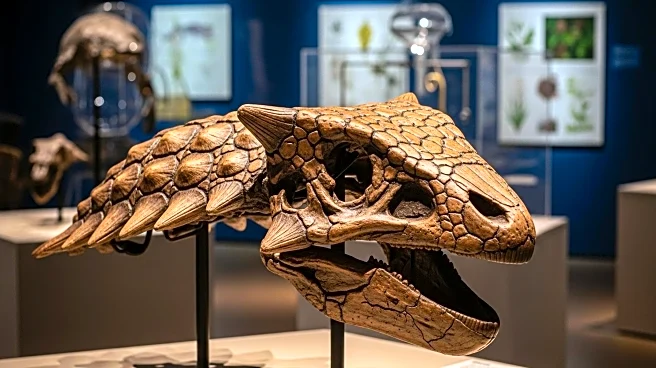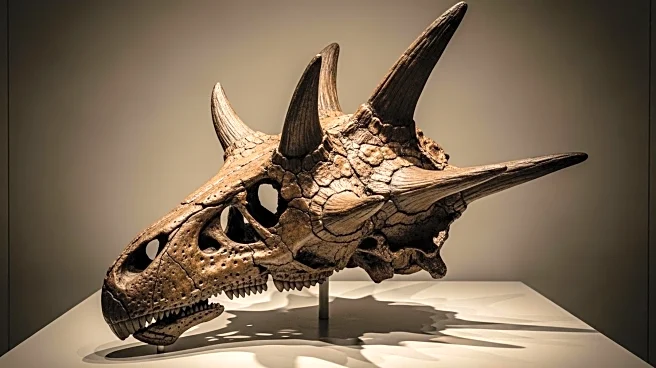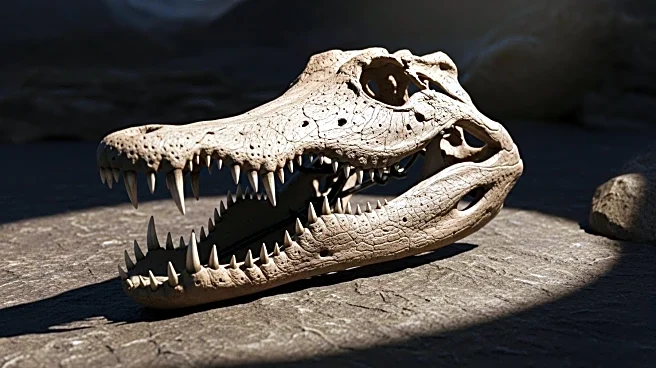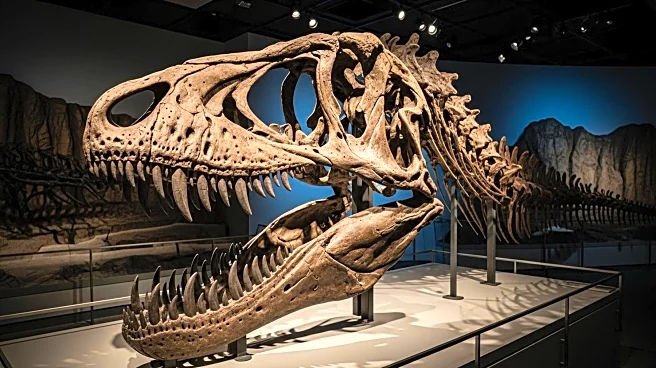What's Happening?
Researchers have uncovered fossilized remains of a dinosaur named Spicomellus in Morocco, dating back 165 million years. This dinosaur, part of the ankylosaur group, was adorned with spikes and armor unlike any other known creature. Spicomellus, approximately 13 feet long, is the oldest-known ankylosaur, a group of armored dinosaurs that were herbivorous and slow-moving. The armor included sharp spikes on its ribs and a collar of spines around its neck, which may have served as defense against predators or as a display to attract mates. The discovery challenges previous theories about the evolution of ankylosaurs, suggesting that tail weapons appeared 30 million years earlier than previously thought.
Why It's Important?
The discovery of Spicomellus provides new insights into the evolution of ankylosaurs, a successful group of herbivorous dinosaurs. The unique armor and tail weaponry suggest that these features evolved much earlier than previously believed, indicating a complex evolutionary history. This finding could reshape understanding of dinosaur defense mechanisms and mating displays, offering a glimpse into the ecological dynamics of the Jurassic period. The research also highlights the importance of fossil preservation and the challenges posed by fossil poaching, which can hinder scientific progress.
What's Next?
Further research is needed to understand the full implications of Spicomellus's armor and its role in the dinosaur's life. Scientists may continue to explore the site in Morocco for additional fossils that could provide more information about this species and its environment. Efforts to combat fossil poaching in Morocco may also be strengthened to protect valuable scientific resources. The study of Spicomellus could lead to new theories about dinosaur evolution and behavior, potentially influencing future paleontological research.
Beyond the Headlines
The discovery of Spicomellus raises ethical concerns about fossil poaching, which can deprive scientists of crucial data needed to understand prehistoric life. The commercialization of fossils poses a threat to scientific integrity and highlights the need for international cooperation to protect paleontological sites. Additionally, the extravagant armor of Spicomellus may prompt discussions about the role of physical traits in animal behavior and evolution, offering parallels to modern species.
